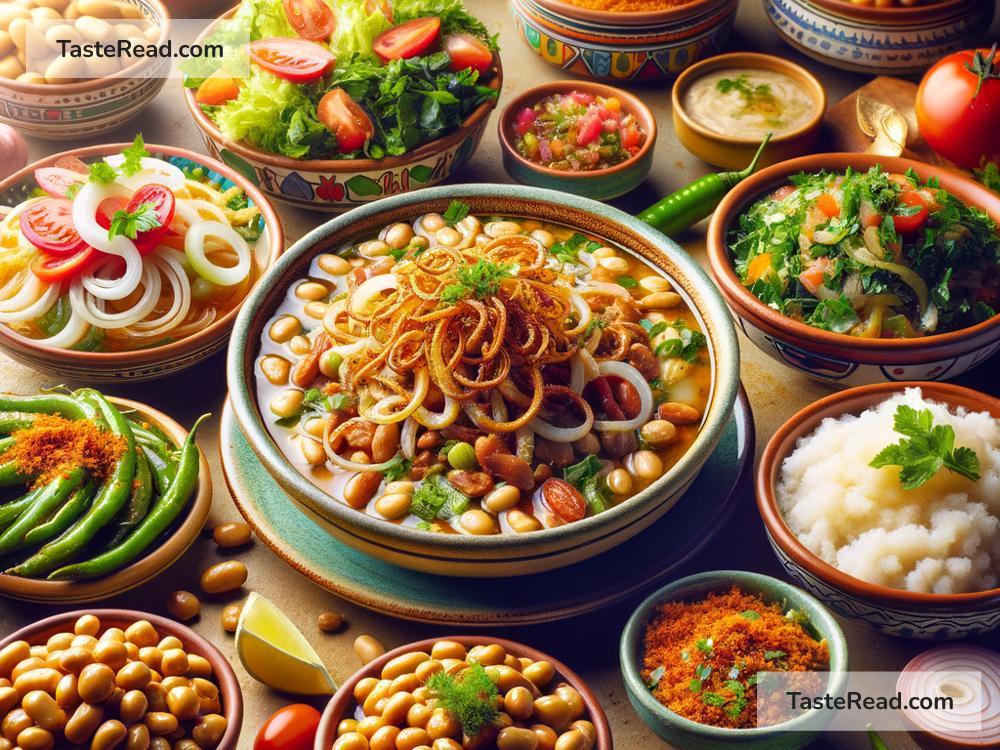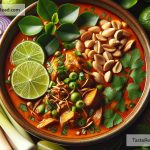Title: Delving into the Rich Tapestry of Egyptian Cuisine: From Fava Beans to Koshari
Egyptian cuisine is a vibrant symphony of flavors and traditions that stretch back thousands of years, deeply rooted in the rich history and diverse cultures that have flourished along the Nile River. It offers an intriguing mixture of dishes that reflect the various influences – be it Mediterranean, African, or Middle Eastern – that have shaped Egypt’s culinary landscape. At the heart of this cuisine are two iconic dishes: Fava beans and Koshari, each telling a story of culture, tradition, and the simple joy of eating.
Fava Beans, or “Ful Medames” as it’s known in Arabic, is a breakfast staple in Egypt. This humble legume has sustained Egyptians for centuries, dating back to the time of the Pharaohs. The beauty of Ful lies in its simplicity and its ability to be both nourishing and affordable. Cooked slowly over low heat, the fava beans are traditionally served with a drizzle of olive oil, a sprinkle of cumin, and a side of crunchy, fresh bread. It’s common to see variations of this dish with additional toppings like lemon juice, chopped parsley, onions, garlic, and sometimes a hard-boiled egg. Ful Medames is more than just a meal; it’s a morning ritual that brings communities together, a comforting start to the day that’s shared across social classes and generations.
Then there’s Koshari, a dish that’s as complex as Egypt itself. Often dubbed as Egypt’s national dish, Koshari embodies the essence of a melting pot – a hearty ensemble of lentils, rice, pasta, and chickpeas, topped with a zesty tomato sauce, crispy onions, and a dash of garlic vinegar. This layered dish is a testament to the various cultural influences that have passed through Egypt. The lentils and rice hint at Middle Eastern flavors, the pasta reflects Italian impact, while the spicy tomato sauce brings everything together in a distinctly Egyptian way. Koshari is not just food; it’s an experience, a burst of flavors that’s both comforting and exhilarating.
What makes Egyptian cuisine particularly fascinating is not just the flavors but the stories behind these dishes. Take, for instance, the history of Fava beans in Egypt, which goes back to ancient times. There’s evidence suggesting that these beans were used in burial rituals, and they were a significant part of the ancient Egyptian diet. Fast forward to modern times, and fava beans have become a symbol of connection to Egypt’s glorious past, bridging the gap between the ancient and the contemporary.
Koshari, on the other hand, tells a different story – one of cultural assimilation and innovation. Introduced in the 19th century, it began as a simple dish of rice, lentils, and pasta, possibly inspired by Indian khichdi and Italian pasta. As it evolved, Egyptians added their twist with spices, tomato sauce, and crispy onions, making it uniquely their own. Koshari reflects Egypt’s historical layers, showcasing how different cultures have left their mark on the country’s culinary heritage.
Both dishes, Fava beans and Koshari, highlight the underlying principle of Egyptian cuisine: the celebration of simple ingredients transformed into something extraordinary through love, tradition, and creativity. It’s this ethos that makes Egyptian food profoundly comforting and universally appealing. Moreover, these dishes underscore the importance of communal dining in Egyptian culture, where meals are a time for family and friends to gather and share not just food but life itself.
Exploring Egyptian cuisine offers a tantalizing glimpse into the country’s soul, revealing stories of resilience, diversity, and unity. From the humble fava beans to the complex layers of Koshari, each dish carries within it centuries of history, a mosaic of cultural identities, and a testament to the enduring spirit of the Egyptian people. Whether you’re enjoying a simple breakfast of Ful Medames by the Nile or indulging in a hearty plate of Koshari in a bustling Cairo marketplace, you’re not just tasting food; you’re experiencing the essence of Egypt.
As we delve into the complexities of Egyptian cuisine, from Fava beans to Koshari, it becomes clear that this culinary tradition is as rich and multifaceted as the history of Egypt itself. Each dish tells a story, each flavor carries a legacy, making the journey through Egyptian food a passage through time, culture, and the very heart of what it means to be Egyptian.


